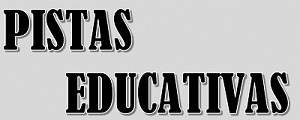SISTEMA EMBEBIDO PARA EL JUEGO DE TRES EN RAYA CON INTELIGENCIA ARTIFICIAL POR MEDIO DEL ALGORITMO MINIMAX (EMBEDDED SYSTEM FOR THE TIC-TAC-TOE GAME WITH ARTIFICIAL INTELLIGENCE USING THE MINIMAX ALGORITHM)
Resumen
Tres en raya es un juego clásico entre dos contendientes, quienes deben colocar fichas en un tablero de 3x3 localidades, gana el jugador que alinea tres fichas en forma horizontal, vertical o diagonal. En este trabajo se describe un sistema embebido para el juego de tres en raya, implementado en la tarjeta DK-TM4C129X. El sistema presenta tres variantes: jugador vs jugador, jugador vs sistema y sistema vs jugador, las últimas dos difieren en la ejecución del primer turno. En los turnos del sistema, este genera sus decisiones con el algoritmo de Minimax, ampliamente documentado en la Inteligencia Artificial y la Teoría de Juegos. El propósito de este trabajo es demostrar la viabilidad de aplicar una técnica de IA en un entorno limitado de recursos, como el microcontrolador Tiva TM4C129X incluido en la tarjeta DK-TM4C129X. La tarjeta también tiene una pantalla táctil, que es fundamental para visualizar y ejecutar el juego.
Palabras Clave: Inteligencia Artificial, Microcontrolador TM4C129X, Minimax, Sistema embebido.
Abstract
Tic-Tac-Toe is a classic game between two players, who must place pieces on a 3x3 board. The player who aligns three pieces horizontally, vertically or diagonally wins. This work describes an embedded system for the Tic-Tac-Toe game, implemented on the DK-TM4C129X board. The system has three variants: player vs player, player vs system and system vs player, the last two variants are different in the execution of the first turn. In the system's turns, it generates its decisions with the Minimax algorithm, widely documented in Artificial Intelligence and Game Theory. The purpose of this work is to demonstrate the feasibility of applying an AI technique in a resource-limited environment, such as the Tiva TM4C129X microcontroller included in the DK-TM4C129X board. The board also has a touch screen, which is essential for viewing and running the game.
Keywords: Artificial Intelligence, Embedded system, Minimax, TM4C129X microcontroller.
Texto completo:
PDFReferencias
AIfES, (2024). Fraunhofer Institute for Microelectronic Circuits and Systems, Artificial Intelligence for Embedded Systems, https://www.ims.fraunhofer.de/en/Business-Unit/Industry/Industrial-AI/Artificial-Intelligence-for-Embedded-Systems-AIfES.html, [Último acceso: Agosto de 2024].
Berger A. S., Embedded Systems Design: An Introduction to Processes, Tools, and Techniques. CMP Books, Lawrence, Kansas, 2002.
Kentec Display, (2024). http://www.kentecdisplay.com/. [Último acceso: agosto de 2024].
Iodice G., M., TinyML Cookbook: Combine artificial intelligence and ultra-low-power embedded devices to make the world smarter, Packt Publishing, 2022.
Pineda C., Luis Alberto, Racionalidad Computacional. Academia Mexicana de Computación, 2021.
Rich E., Knight K., Inteligencia Artificial, Segunda edición, McGraw Hill, 1994.
Russell, S. J., Norvig, P., Inteligencia Artificial: Un Enfoque Moderno, Segunda edición, Pearson Educación, 2004.
TI_DRLib (Texas Instruments, Driver Library), TivaWare™ Peripheral Driver Library. User’s Guide, 2014.
TI_DS (Texas Instruments, Data Sheet), Tiva TM4C129XNCZAD Microcontroller, 2014.
TI_GRLib (Texas Instruments, Graphics Library), TivaWare™ Graphics Library. User’s Guide, 2013.
TI_UG (Texas Instruments, User’s Guide), Tiva™ TM4C129X Development Board, Literature Number: SPMU360, October 2013.
TRBL Services, (2023). ¿Se puede aplicar Inteligencia Artificial en sistemas embebidos?, https://www.linkedin.com/pulse/se-puede-aplicar-inteligencia-artificial-en-sistemas/, [Último acceso: agosto de 2023].
Winston, P. H., Inteligencia Artificial, Tercera edición, Addison-Wesley Iberoamericana, 1992.
Wulfert L., Kühnel J., Krupp L., Viga J., Wiede C., Gembaczka P., Grabmaier A., AIfES: A Next-Generation Edge AI Framework, IEEE Transactions on Pattern Analysis and Machine Intelligence, Vol. 46, No. 6, June 2024.
URL de la licencia: https://creativecommons.org/licenses/by/3.0/deed.es

 Pistas Educativas está bajo la Licencia Creative Commons Atribución 3.0 No portada.
Pistas Educativas está bajo la Licencia Creative Commons Atribución 3.0 No portada. 
TECNOLÓGICO NACIONAL DE MÉXICO / INSTITUTO TECNOLÓGICO DE CELAYA
Antonio García Cubas Pte #600 esq. Av. Tecnológico, Celaya, Gto. México
Tel. 461 61 17575 Ext 5450 y 5146
pistaseducativas@itcelaya.edu.mx
